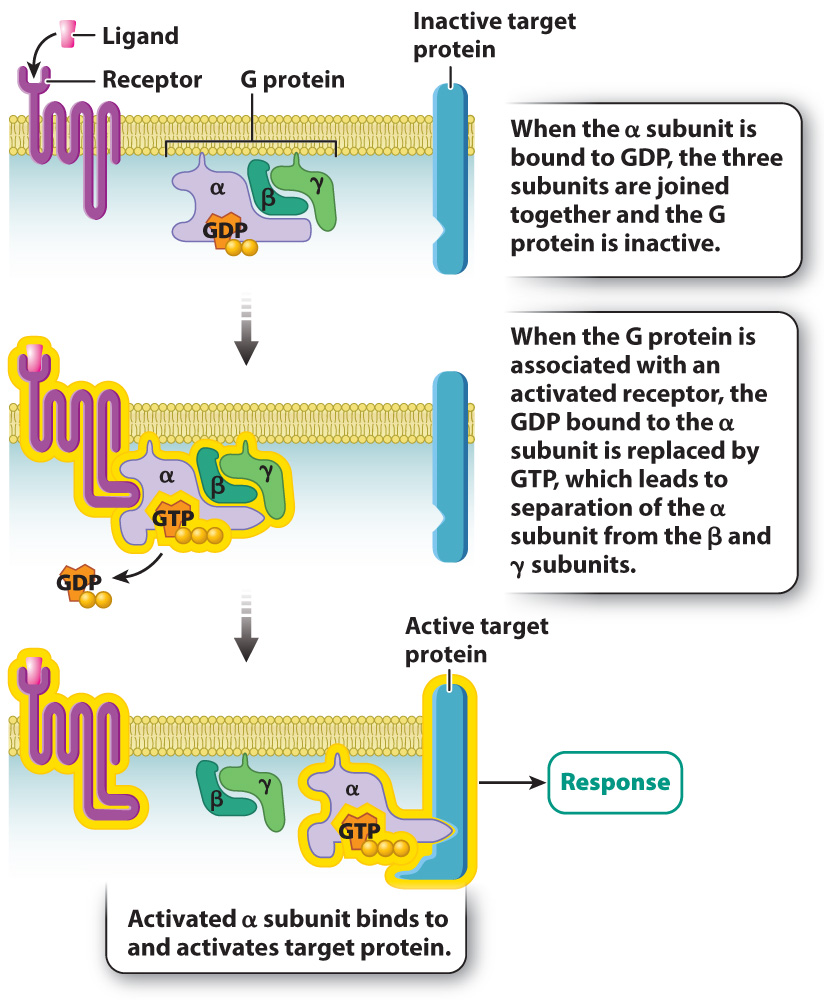The first step in cell signaling is receptor activation.
As we saw in section 9.3, G protein-coupled receptors are transmembrane proteins that bind signaling molecules. When a ligand binds to a G protein-coupled receptor, it is on, or active. In its active state, it couples to (that is, it binds to) a G protein, which is located on the cytoplasmic side of the plasma membrane.
The G protein also has two states, on or off. A G protein is able to bind to the guanine nucleotides GTP and GDP. When it is bound to GTP, it is on, or active, and when it is bound to GDP, it is off, or inactive.
When a ligand binds to a G protein-coupled receptor, the receptor in turn binds to and activates a G protein by causing it to release GDP and bind GTP. As long as the G protein is bound to GTP, it is in the on position. The activated G protein goes on to activate additional proteins in the signaling pathway.
Some G proteins are composed of three subunits, called the α (alpha), β (beta), and γ (gamma) subunits (Fig. 9.9). The α subunit is the part of the G protein that binds to either GDP or GTP. When GDP bound to the α subunit is replaced by GTP, the α subunit separates from the β and γ subunits. In most cases, it is the isolated GTP-

Quick Check 2 Is the term “G protein” just a shorter name for a G protein-coupled receptor?
Quick Check 2 Answer
No. A G protein-